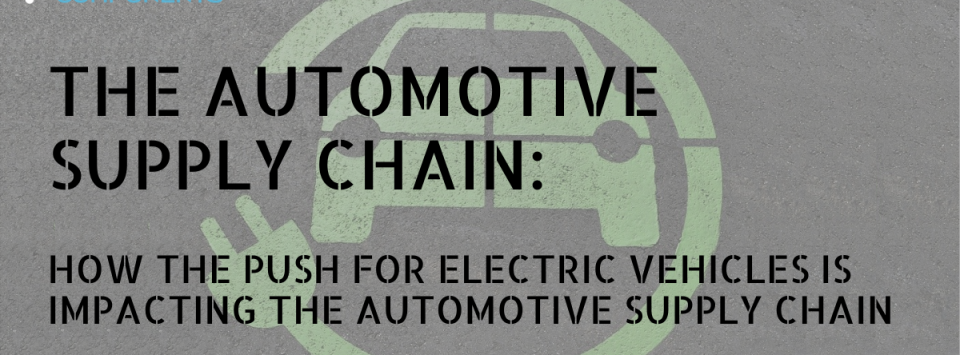As internal combustion engines seem to be yielding to their electric alternatives, the automotive supply chain is set for a radical transformation.
According to reports, automakers are preparing to invest around $225 billion over the next few years to develop new electric vehicles, and many are partnering with battery makers to power their cars. Since ICE vehicles and electric vehicles employ an entirely different powertrain, the types of components used, and logistics processes used to move them will see a huge shift. Almost all the components, from the mechanical engineering to the electrical and electronic engineering, will be entirely different.
Reports indicate a few key findings:
- Battery manufacturing processes will transform the automotive supply chain, as they are the dominant technology in EVs.
- The geography of battery and electric component production locations will cause supply chain and logistics providers to adjust accordingly.
- Low volume battery manufacturers and vehicle manufacturers with in-house battery manufacturing will likely be driven out by the higher volume manufacturers.
Things to consider:
- Typically, EV battery packs are extremely heavy, cover the entire floor of the vehicle, and account for roughly 1/3 of the production cost. As a result, batteries play a huge role in analyzing the EV supply chain and logistics. The battery manufacturing supply chain can be separated into three main segments: cell manufacturing, module manufacturing, and pack assembly. These three segments can be conducted in the same location, but they could also be broken up into separate locations. For example, the battery cells, modules, and packs for the Nissan Leaf are all produced by Automotive Energy Supply Corporation (AESC) in Sunderland, England. However, AESC also sends modules to Spain, where they are put into packs to be used in electric vans. While the segments of the battery manufacturing supply chain don’t need to be in close proximity to each other, pack assembly tends to occur near the vehicle assembly location. This is due to the cost of transporting the packs, because they are much larger and heavier than cells or modules.
- There are essentially two different design concepts that manufacturers can adopt to make the switch to electric vehicle production. There is the “conversion” route, in which they would take an existing internal combustion vehicle and simply swap in the new powertrain. Alternatively, they could go the “purpose built” route, in which the entire design process is based on an EV powertrain from the beginning. Using the conversion method would save the manufacturer money on the design process, since they are using the base of an existing model. The supply chain for conversion EVs would also look very similar to that of its ICE predecessor, apart from a few additional EV parts. The supply chain for purpose-built EVs on the other hand, would look completely different, as the design and bill of materials would be developed to the specifications of an EV. Therefore, for obvious reasons, the total impact of the EV movement is very dependent on the design route that manufacturers choose to pursue.
- Apart from the batteries, EV components are much lighter and easier to manage than the traditional components in an ICE vehicle. When the motor of a Chevy Bolt was compared to a 4-cylinder IC engine, 3 moving parts were found in the electric motor as opposed to 113 in the combustion engine. Furthermore, most EVs have a single-speed transmission, and have no need for forced induction from a turbocharger or supercharger. As a result, EV components such as the electric motor are likely to be highly commoditized. This also diminishes the opportunity for manufacturers to use motor technology as a point of competitive differentiation.
Key conclusions
Since EVs employ an entirely different powertrain, the adoption of EVs will naturally shrink the addressable market for component suppliers. Some reports indicate that the share of value-added in EVs by component suppliers will total between 35%-40%, as opposed to 50%-55% of a gasoline powered vehicle. Additionally, since the EV batteries are generally made by companies outside of the traditional automotive supply chain, legacy suppliers can expect plenty of new competition.
Navigating through electrification
Change is part of all industries, and it has become increasingly apparent that changes are coming in the automotive supply chain. At Aegis Components, we believe that one of the most critical steps in preparing for the coming shift, is to find a reliable supplier that is equally prepared. Through analysis, we accounted for the technological and regulatory landscapes to develop a realistic view on EV adoption. We’ve analyzed product portfolios and thoroughly assessed our abilities to compete in the changing market. We invite you to contact our dedicated automotive specialist to learn how Aegis can support you through this transition!

Sources: www.pwc.com
www.sourcetoday.com
